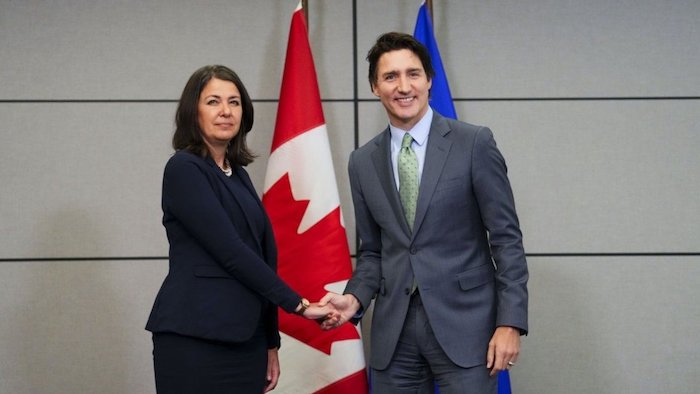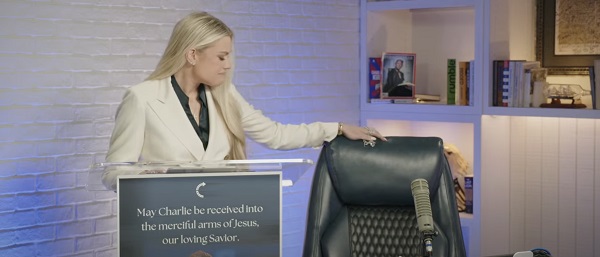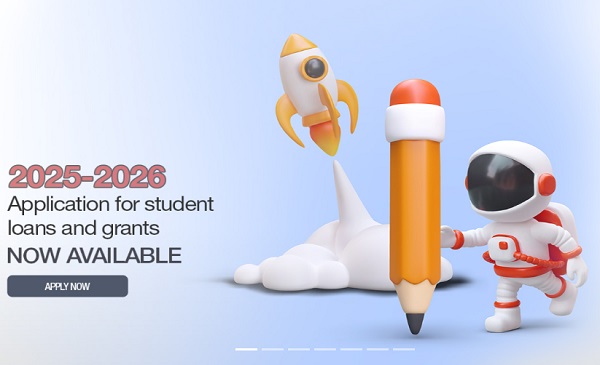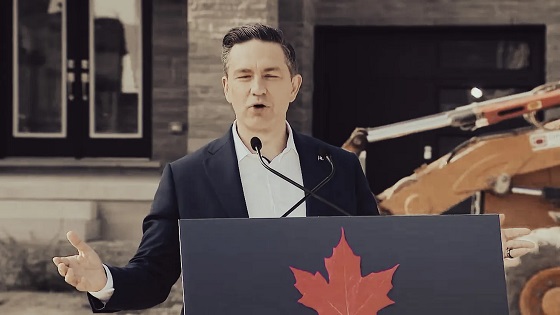Alberta
The Awed Couple: Can Ottawa Force Alberta To Stay In Its Lane?

Fact: Alberta and Saskatchewan were to enter Confederation in 1905 as a province named Buffalo. But Sir Wilfrid Laurier feared a landmass that big would threaten the domination of Quebec and Ontario in Canada. And so Buffalo was split into the two provinces we know today.
Of all the riddles that make up Canada’s current prime minister one of the most intriguing is how the grandson of a man, Charles-Émile Trudeau, who made his fortune in Montreal gas stations is now hellbent on destroying the same industry.
In this obsession to end fossil fuels, Trudeau does have the company of many other heirs to fortunes created by oil and its products. The ranks of Green NGOs and political movements are thick with names like Rockefeller, Getty, Morgan, Flagler and more, heirs with a guilty conscience about perceived climate-change destruction.
But while most of these families have chosen discreet roles in their quest, Trudeau’s climate infatuation has propelled him to prime minister of Canada since 2015. In that time “Sunny Ways” Justin has obsessively pursued his goal of transitioning Canada from the fossil-fuel giant to an imagined Shangri-la of gentle breezes and warm sunshine.
Nothing can shake him of his messianic role as saviour of the Frozen North. Likewise, no public disgrace or controversy can shake his loyal supporters who supported his father in the same manner. Buttressed by the lapdog NDP caucus he spouts buckets of enviro-nonsense to a docile media (which he has bribed to stay quiet).
Because subtlety is not a strong suit he even named a former Greenpeace zealot and convicted felon as his Environment minister. Which has naturally put him directly at odds with that portion of the country that exploits fossil fuels and (don’t tell anybody) floats the boat of federal budgets.
So when Justin proposed a Canadian Sustainable Jobs Act to turn energy workers into code writers and social workers by 2035 there was a degree of pushback amongst those who would lose their livelihoods. That plan was revealed last week by EnerCan (who makes up this dreck?) minister Jonathan Wilkinson.
Promising to convert Calgary’s public transit to all-electric, Wilkinson (former leader of the New Democratic Party‘s youth wing in Saskatchewan) proposed the ‘Sustainable Jobs Act’ advisory council that will provide the federal government with recommendations on how to support the Canadian workforce during transition to a ‘net-zero economy.” You can guess who’ll be on the advisory council, but don’t count on any Ford F-150 drivers.

Enter Danielle Smith, newly re-elected premier of Alberta. Smith and her advisors have declared as unworkable the federal government’s unilateral prescription for a carbon-neutral society by 2050. While they recognize the need for transition the Alberta solution is predictably less draconian than Trudeau’s Pol Pot prescription for moving the population back to a more bucolic lifestyle.
Specifically, Alberta wants “to achieve a carbon-neutral energy economy by 2050, primarily through investment in emissions-reduction technologies and the increased export of Alberta LNG to replace higher-emitting fuels internationally.” (Presumably Alberta will be joined by Saskatchewan in this pushback.)
Then came the hammer. “As the development of Alberta’s natural resources and the regulation of our energy sector workforce are constitutional rights and the responsibility of Alberta, any recommendations provided by this new federal advisory council must align with Alberta’s Emissions Reduction and Energy Development Plan.”
Translation: Federal legislation has to be in synch with provincial plans, not the other way around. In short, try to impose some Michael Mann fantasy on the province and it’s a no-go. Don’t like it? See you in court. In Alberta. Not Ottawa.
Will this constitutional gambit work? While Smith’s mandate from the recent election is hardly rock-solid, she does have the benefit of time in her four-year term. Trudeau has no such luxury, and launching a court case in Alberta would likely stretch past his mandate ending next year. Yes, the impertinence of Alberta would play well with his base in the 514/613/416. But let’s be honest, they are voting Trudeau even if he (in the words of Donald Trump) grabs them by the privates.
One thing you can be assured of when it comes to the PM. He will not be forcing any Canadian Sustainable Jobs Act on the Ontario auto industry to aid its transition to EV vehicles. There will be no helpful suggestions on the death of the automobile for the new mutlti-billion dollar VW battery plants cashing federal cheques in Windsor. He knows his voting base won’t buy it. But those Alberta saps?
The telling impact of this jurisdictional fight will be where Trudeau’s rival, Pierre Poilievre, comes down on the transition issue. With his election depending on the swaths of voters in the GTA shoulder ridings— where Trudeau’s mooting about crybaby Alberta will get a full airing— does he lend his support to Smith’s pushback?

Put simply, is backing Alberta sovereignty in the oil patch a vote-loser for a party still looking past “Hate Trudeau” as an election platform? You could see Poilievre rationalizing that he’ll get the seats in the West no matter what, so why not leave Trudeau to wrassle the Alberta bear alone?
Risky for sure. But if he gets the PMO seat in 2024 Poilievre can always play kiss-and-make-up later with Smith and her government. Can’t wait.
Sign up today for Not The Public Broadcaster newsletters. Hot takes/ cool slants on sports and current affairs. Have the latest columns delivered to your mail box. Tell your friends to join, too. Always provocative, always independent. https://share.hsforms.com/16edbhhC3TTKg6jAaRyP7rActsj5
Bruce Dowbiggin @dowbboy is the editor of Not The Public Broadcaster A two-time winner of the Gemini Award as Canada’s top television sports broadcaster, he’s a regular contributor to Sirius XM Canada Talks Ch. 167. Inexact Science: The Six Most Compelling Draft Years In NHL History, his new book with his son Evan, was voted the seventh-best professional hockey book of all time by bookauthority.org . His 2004 book Money Players was voted sixth best on the same list, and is available via http://brucedowbigginbooks.ca/book-personalaccount.aspx
Alberta
Equalization program disincentivizes provinces from improving their economies

From the Fraser Institute
By Tegan Hill and Joel Emes
As the Alberta Next Panel continues discussions on how to assert the province’s role in the federation, equalization remains a key issue. Among separatists in the province, a striking 88 per cent support ending equalization despite it being a constitutional requirement. But all Canadians should demand equalization reform. The program conceptually and practically creates real disincentives for economic growth, which is key to improving living standards.
First, a bit of background.
The goal of equalization is to ensure that each province can deliver reasonably comparable public services at reasonably comparable tax rates. To determine which provinces receive equalization payments, the equalization formula applies a hypothetical national average tax rate to different sources of revenue (e.g. personal income and business income) to calculate how much revenue a province could generate. In theory, provinces that would raise less revenue than the national average (on a per-person basis) receive equalization, while province’s that would raise more than the national average do not. Ottawa collects taxes from Canadians across the country then redistributes money to these “have not” provinces through equalization.
This year, Ontario, Quebec, Manitoba and all of Atlantic Canada will receive a share of the $26.2 billion in equalization spending. Alberta, British Columbia and Saskatchewan—calculated to have a higher-than-average ability to raise revenue—will not receive payments.
Of course, equalization has long been a contentious issue for contributing provinces including Alberta. But the program also causes problems for recipient or “have not” provinces that may fall into a welfare trap. Again, according to the principle of equalization, as a province’s economic fortunes improve and its ability to raise revenues increases, its equalization payments should decline or even end.
Consequently, the program may disincentivize provinces from improving their economies. Take, for example, natural resource development. In addition to applying a hypothetical national average tax rate to different sources of provincial revenue, the equalization formula measures actual real-world natural resource revenues. That means that what any provincial government receives in natural resource revenue (e.g. oil and hydro royalties) directly affects whether or not it will receive equalization—and how much it will receive.
According to a 2020 study, if a province receiving equalization chose to increase its natural resource revenues by 10 per cent, up to 97 per cent of that new revenue could be offset by reductions in equalization.
This has real implications. In 2018, for instance, the Quebec government banned shale gas fracking and tightened rules for oil and gas drilling, despite the existence of up to 36 trillion cubic feet of recoverable natural gas in the Saint Lawrence Valley, with an estimated worth of between $68 billion and $186 billion. Then in 2022, the Quebec government banned new oil and gas development. While many factors likely played into this decision, equalization “claw-backs” create a disincentive for resource development in recipient provinces. At the same time, provinces that generally develop their resources—including Alberta—are effectively punished and do not receive equalization.
The current formula also encourages recipient provinces to raise tax rates. Recall, the formula calculates how much money each province could hypothetically generate if they all applied a national average tax structure. Raising personal or business tax rates would raise the national average used in the formula, that “have not” provinces are topped up to, which can lead to a higher equalization payment. At the same time, higher tax rates can cause a decline in a province’s tax base (i.e. the amount of income subject to taxes) as some taxpayers work or invest less within that jurisdiction, or engage in more tax planning to reduce their tax bills. A lower tax base reduces the amount of revenue that provincial governments can raise, which can again lead to higher equalization payments. This incentive problem is economically damaging for provinces as high tax rates reduce incentives for work, savings, investment and entrepreneurship.
It’s conceivable that a province may be no better off with equalization because of the program’s negative economic incentives. Put simply, equalization creates problems for provinces across the country—even recipient provinces—and it’s time Canadians demand reform.
Alberta
Provincial pension plan could boost retirement savings for Albertans

From the Fraser Institute
By Tegan Hill and Joel Emes
In 2026, Albertans may vote on whether or not to leave the Canada Pension Plan (CPP) for a provincial pension plan. While they should weigh the cost and benefits, one thing is clear—Albertans could boost their retirement savings under a provincial pension plan.
Compared to the rest of Canada, Alberta has relatively high rates of employment, higher average incomes and a younger population. Subsequently, Albertans collectively contribute more to the CPP than retirees in the province receive in total CPP payments.
Indeed, from 1981 to 2022 (the latest year of available data), Alberta workers paid 14.4 per cent (annually, on average) of total CPP contributions (typically from their paycheques) while retirees in the province received 10.0 per cent of the payments. That’s a net contribution of $53.6 billion from Albertans over the period.
Alberta’s demographic and income advantages also mean that if the province left the CPP, Albertans could pay lower contribution rates while still receiving the same retirement benefits under a provincial pension plan (in fact, the CPP Act requires that to leave CPP, a province must provide a comparable plan with comparable benefits). This would mean Albertans keep more of their money, which they can use to boost their private retirement savings (e.g. RRSPs or TFSAs).
According to one estimate, Albertans’ contribution rate could fall from 9.9 per cent (the current base CPP rate) to 5.85 per cent under a provincial pension plan. Under this scenario, a typical Albertan earning the median income ($50,000 in 2025) and contributing since age 18, would save $50,023 over their lifetime from paying a lower rate under provincial pension plan. Thanks to the power of compound interest, with a 7.1 per cent (average) nominal rate of return (based on a balanced portfolio of investments), those savings could grow to nearly $190,000 over the same worker’s lifetime.
Pair that amount with what you’d receive from the new provincial pension plan ($265,000) and you’d have $455,000 in retirement income (pre-tax)—nearly 72 per cent more than under the CPP alone.
To be clear, exactly how much you’d save depends on the specific contribution rate for the new provincial pension plan. We use 5.85 per cent in the above scenario, but estimates vary. But even if we assume a higher contribution rate, Albertan’s could still receive more in retirement with the provincial pension plan compared to the current CPP.
Consider the potential with a provincial pension contribution rate of 8.21 per cent. A typical Albertan, contributing since age 18, would generate $330,000 in pre-tax retirement income from the new provincial pension plan plus their private savings, which is nearly one quarter larger than they’d receive from the CPP alone (again, $265,000).
Albertans should consider the full costs and benefits of a provincial pension plan, but it’s clearly Albertans could benefit from higher retirement income due to increased private savings.
-

 Crime2 days ago
Crime2 days agoFormer NYPD Inspector Shares What Family Of Alleged Charlie Kirk Assassin Feared Before Turning Him In
-

 Daily Caller2 days ago
Daily Caller2 days ago‘You Have No Idea What You Have Unleashed’: Erika Kirk Addresses Supporters For First Time Since Kirk’s Assassination
-

 espionage1 day ago
espionage1 day agoInside Xi’s Fifth Column: How Beijing Uses Gangsters to Wage Political Warfare in Taiwan — and the West
-

 Education1 day ago
Education1 day agoOur kids are struggling to read. Phonics is the easy fix
-

 Censorship Industrial Complex1 day ago
Censorship Industrial Complex1 day agoDecision expected soon in case that challenges Alberta’s “safe spaces” law
-

 International1 day ago
International1 day agoBrazil sentences former President Bolsonaro to 27 years behind bars
-

 Energy19 hours ago
Energy19 hours agoThe IEA’s Peak Oil Fever Dream Looks To Be In Full Collapse
-

 Crime19 hours ago
Crime19 hours agoTransgender Roomate of Alleged Charlie Kirk Assassin Cooperating with Investigation





